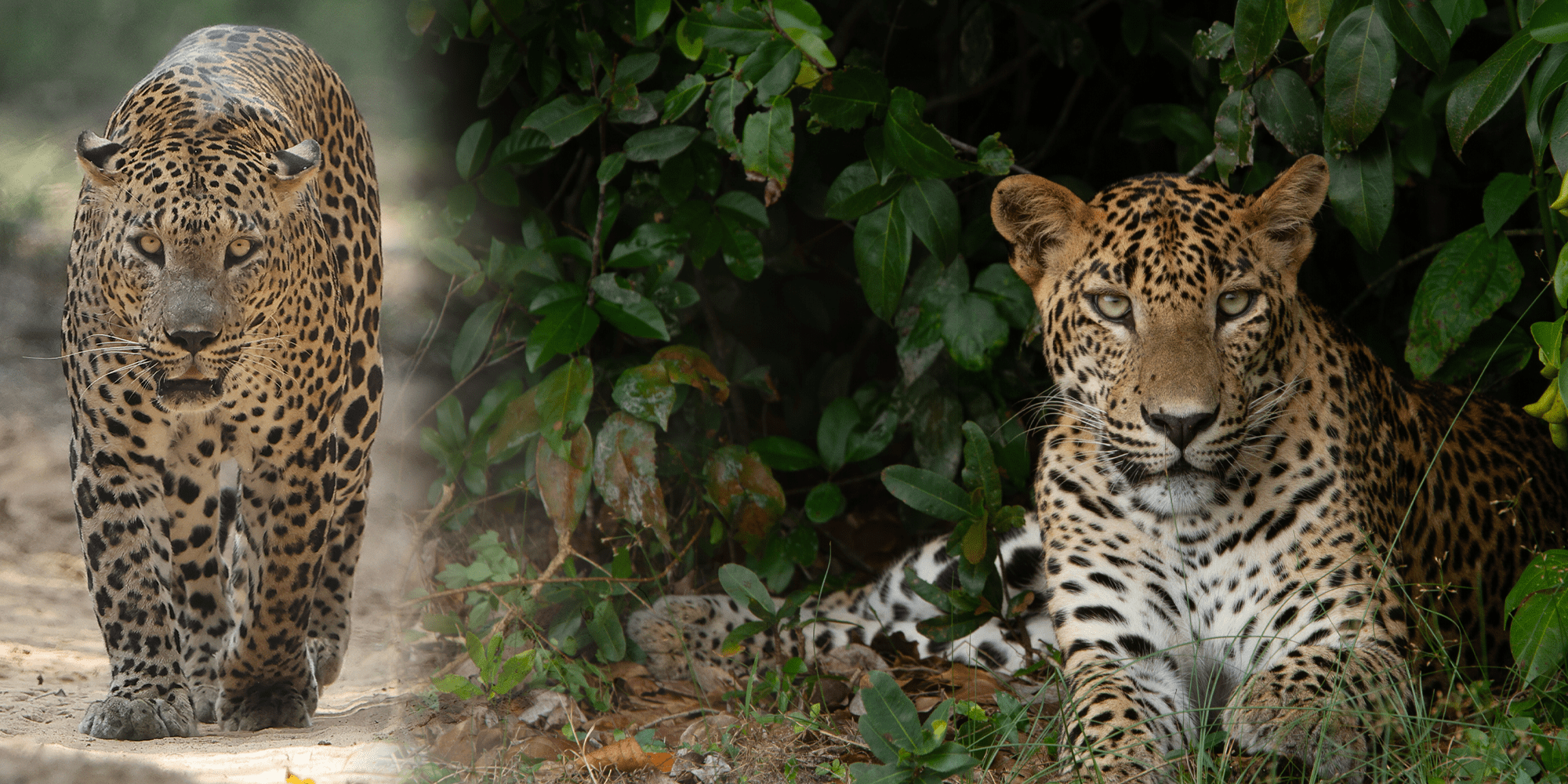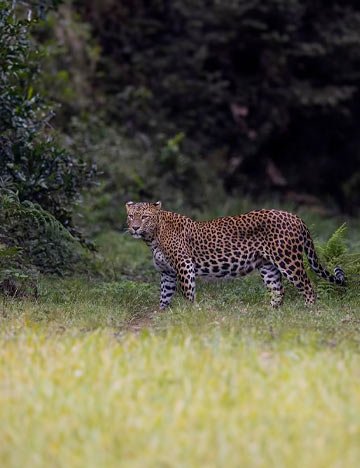In regions where the “WNPS LOLC Multi-Regional Leopard Research and Conservation Project” conducts project activities including questionnaire surveys, field observations, and public awareness sessions, the center coordinators have been able to build up a network of informants. Inquiries on leopards and other wildcat identification and information on leopard-related incidents have been reported to the field staff of the project through this network of informants. Also, different rural communities and estate communities have requested to conduct awareness sessions in their regions to minimize human-leopard negative interactions. People have become confident in reaching out and asking for advise over time instead of impulsive actions in the past.

News insights
Managing visitor traffic for Sri Lanka’s iconic species.
"The leopard has become a tourism icon and has directly and indirectly generated significant tourism revenues and also created jobs in wildlife tourism. It has also become the subject of several scientific projects from those who are working full time in academia or conservation NGOs as well as those who are engaged in Citizen Science. One example of the interest in leopard studies is the LOLC and WNPS Multi-Regional Monitoring System for the Conservation of the Sri Lankan Leopard.
Starting in the early 2000s, I was amongst a group of people who popularised Sri Lanka as a destination for leopard safaris. Not surprisingly, I am often asked about the situation which is occurring where a group of safari vehicles congregate near a resting leopard creating an ill-tempered traffic jam of jostling safari vehicles. This creates a bad experience for visitors and is damaging to the Sri Lanka tourism brand. What can be done?
A simple and practicable and workable solution is to space out visitors spatially and temporally. There is no magic in this. For a few decades now, museums and other visitor attractions around the world have been issuing visitors with tickets that can be purchased online which work on a timed entry basis. National parks and reserves in other parts of the world have also implemented routes and times, which limit the number of vehicles or visitors. They can also be subject to differential pricing. It may be time to trial these solutions at one or more of the Sri Lanka national parks after due consultation with local stakeholders. The possible actions to consider include defined routes with limit on the number of vehicles in each route, timed entry and differential pricing. Any actions implemented needs to strike a sensible balance between having the desired outcome and not being too complicated for people to use.
"

Enjoying the majesty of our leopard responsible.
"The Sri Lankan leopard (Panthera pardus kotiya) is one of Sri Lanka’s most iconic and charismatic wildlife species. As the island’s only large predator, it plays a vital role in maintaining the ecological balance of Sri Lanka’s diverse ecosystems. The Sri Lankan leopard is a subspecies endemic to the country and is one of the largest leopard subspecies in the world.
However, this leopard is classified as ‘Endangered’ with an estimated population of less than 800 mature animals remaining in the wild. Habitat loss, human-wildlife conflict, and poaching are some of the biggest threats that the Lankan leopard faces, and in 2021, 1 August was made Sri Lanka Leopard Day following a proposal by the Wildlife and Nature Protection Society (WNPS).
"

SAVE THE SRI LANKAN LEOPARD: LOLC’S COMMITMENT TO PROTECT OUR APEX PREDATOR
"In celebration of National Leopard Day on August 1st, LOLC Holdings has launched several new initiatives to further its ongoing commitment to the conservation of the Sri Lankan leopard, in partnership with the Wildlife and Nature Protection Society (WNPS).
The Sri Lankan leopard, an apex predator and a key component of the island's rich biodiversity, faces escalating threats from unplanned land use, wildlife crimes, inadequate penalties, and limited ecological understanding. With rough estimates suggesting fewer than 1,000 individuals remaining in the country, the conservation of this endemic subspecies has become increasingly vital.
As part of this expanded effort, LOLC has introduced a new logo under the theme 'Save the Sri Lankan Leopard,' designed to raise awareness and foster public engagement. Resonating with both conservationists and the general public, the logo features a clean and powerful image of the leopard, emphasising the importance of protecting the Sri Lankan leopard and its habitat, aiming to inspire pride and support for conservation efforts.
"
Echoes of Extinction
"The landmark collaboration, the Wildlife and Nature Protection Society (WNPS) and LOLC Holdings PLC have embarked on a comprehensive five-year initiative to safeguard the Sri Lankan leopard (Panthera pardus kotiya), an apex predator endemic to our island. With estimates suggesting fewer than 1,000 individuals remaining, this project is both timely and critical. The initiative has established six research stations across diverse locations—Panama, Sinharaja, Kilinochchi, Belihuloya, Kotagala, and Sigiriya—to monitor leopard populations using advanced methods like camera traps and surveys.
This collaboration highlights corporate responsibility in preserving biodiversity. As LOLC’s COO Kithsiri Gunawardena states, “Protecting an apex predator safeguards an entire ecosystem.” By uniting science, conservation, and community efforts, this initiative ensures a future where leopards and humans coexist sustainably
"


